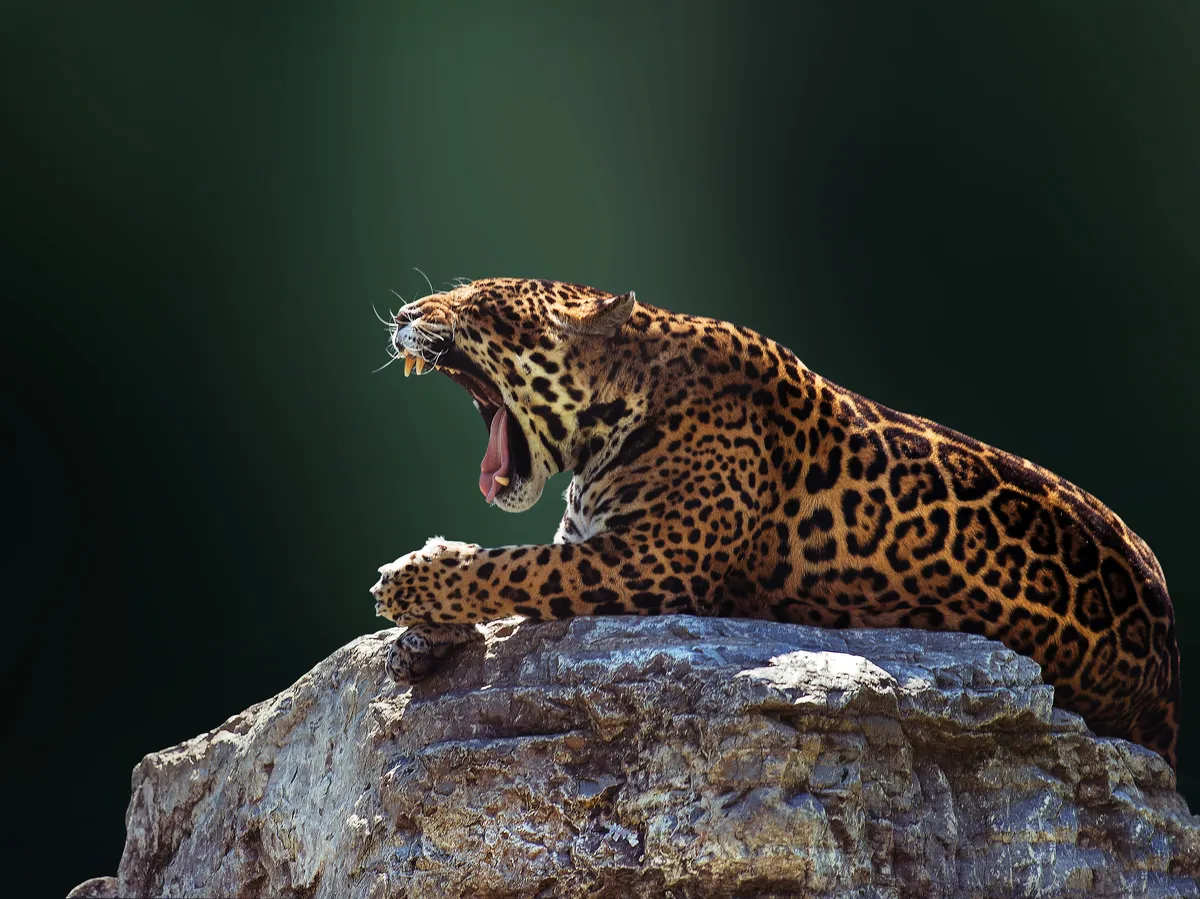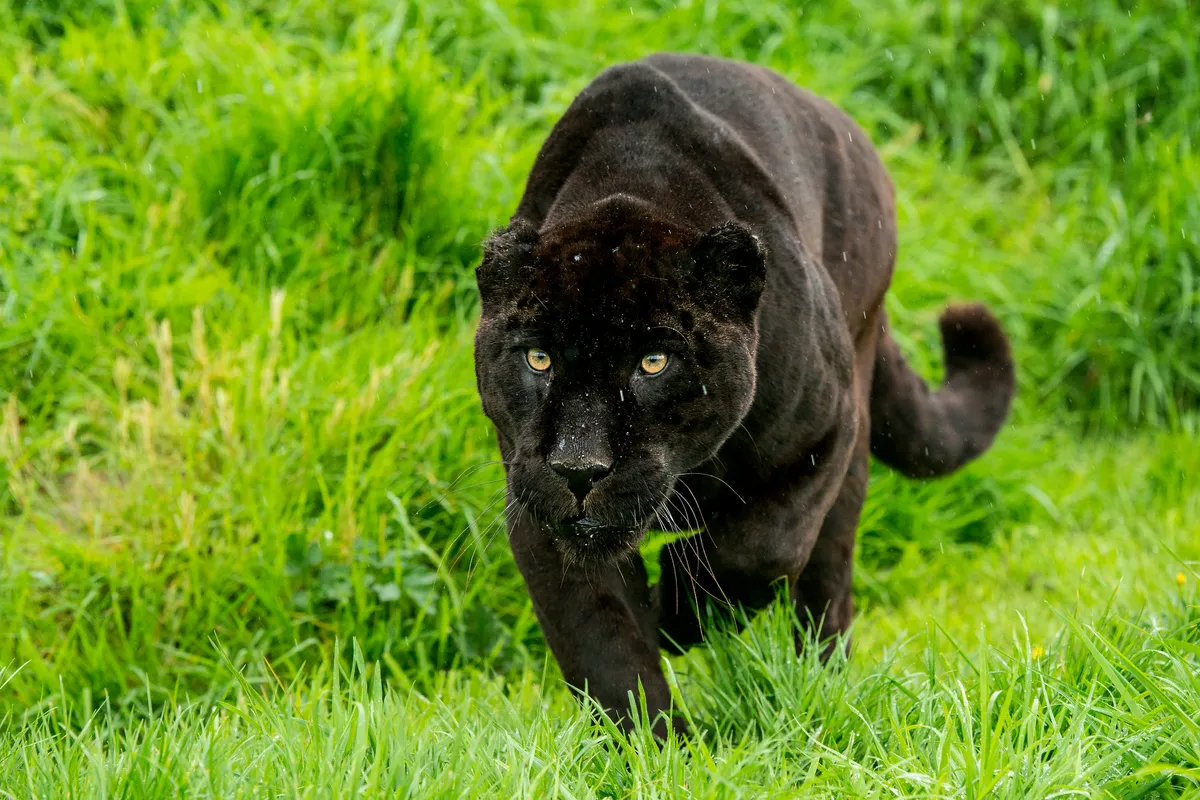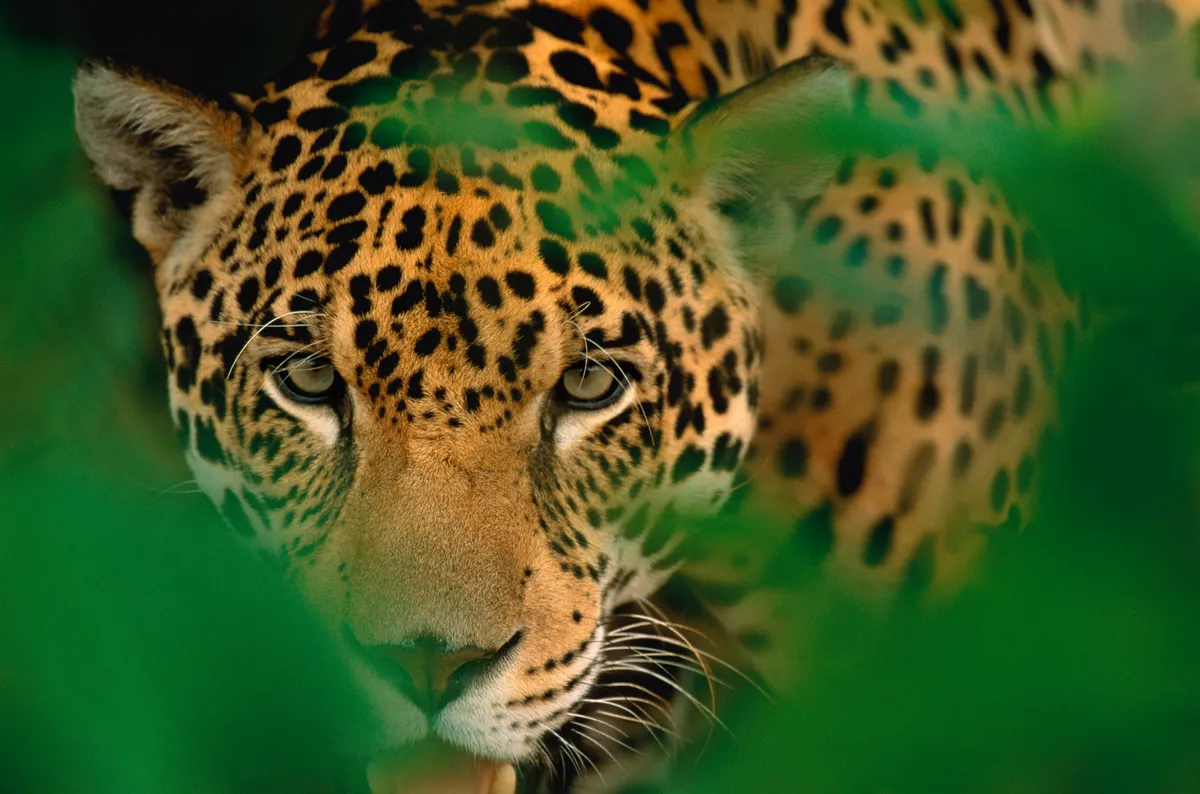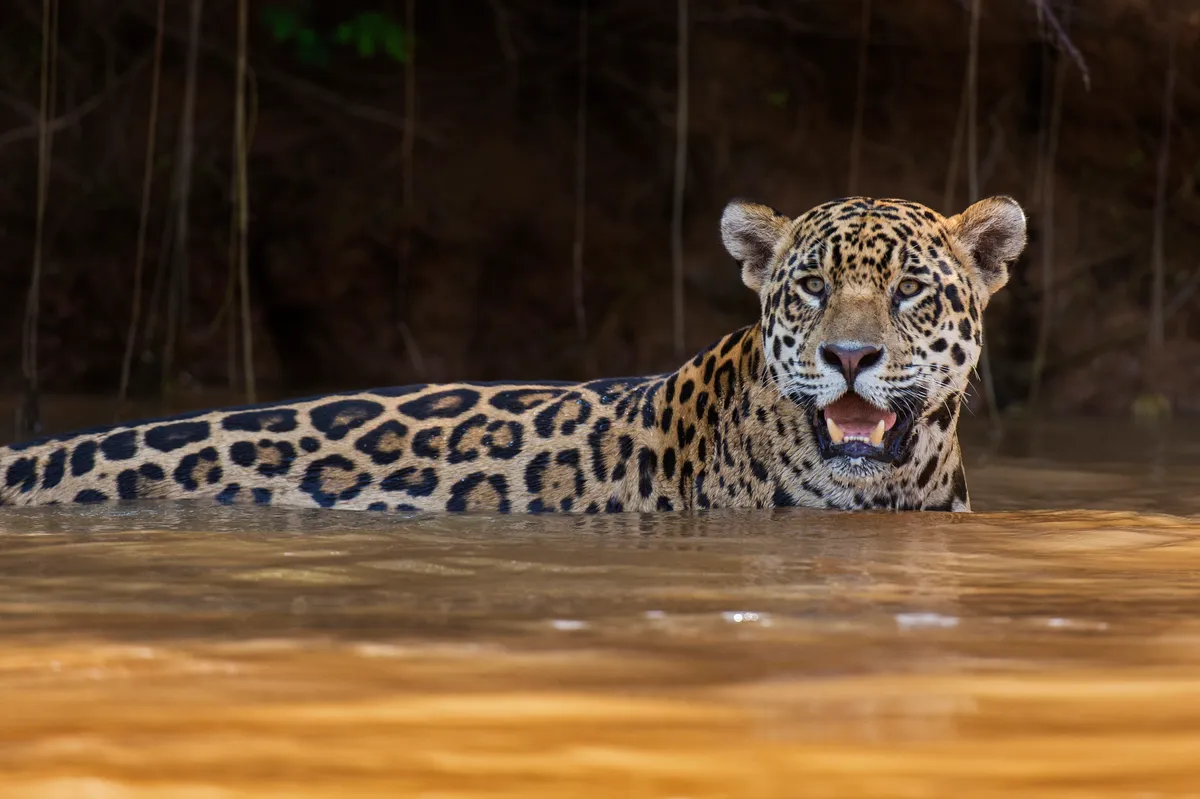In our expert jaguar guide learn all about these spectacular bigs cats, including how to identify each species, their diet and best places to see them in their natural habitat, plus conservation work.
How many different species of jaguar are there?
Found in the Americas, the jaguar is an endangered species with ongoing conservation work to save the eight of the jaguar subpopulations from extinction. In total there are 34 jaguar subpopulations.
How big is a jaguar?
The jaguar Panthera onca is the largest cat in the Americas and the third-largest in the world (after the lion and tiger). Its head-body length can reach around 240cm, and its shoulder height up to 75cm.

Where do jaguars live?
Today, the jaguar is found in South and Central America, from Mexico to northern Argentina. The species’ range formerly spread over the US border into the southern states of America, but had become wiped out there by the 1940s due to hunting. There have been sporadic sightings in Arizona in recent years, however.
While jaguars do live in drier regions, they're normally strongly associated with water, and they thrive in rainforests like the Amazon and in dense swamplands and wetlands that provide plenty of cover for stalking prey.
Where's the best place to see jaguars?
The Pantanal in Brazil is one of the best places in the world to see jaguars. The best time to visit is the dry season, from late April to early November, as that's when prey is more concentrated.

What is the difference of a jaguar vs a leopard?
Jaguars are most similar in appearance to leopards, but there's nothing you can confuse them with in the wild, as no other big cats live in South America. Cougars are technically not big cats but are a similar size to leopards, but they don't have spots and jaguars are far more powerfully built.
The most distinctive feature of the jaguar is the shape of their spots. The spots resemble roses, and as such are known as rosettes. While leopards also have somewhat similar rosettes, the key difference is that jaguars' rosettes have spots inside them, whereas leopards' rosettes don't.

Is a black panther the same as a black jaguar?
'Black panther' is the general term for any melanistic big cat, which will generally be a black leopard or a black jaguar. In jaguars, the melanistic gene is dominant, so black jaguars aren't too unusual, although they are generally more difficult to see and may spend more time in dark rainforest (where they're better camouflaged) than hunting by the water.

How strong is a jaguar's bite?
Jaguars have incredibly powerful jaws, strong enough to pierce a skull and crack a sea turtle’s shell. They are fearsome predators and will hunt anything from frogs, fish and reptiles to livestock, cows and deer.
Jaguars have got an impressive bite, but how do they stack up against the other big cats?
What conservation work is being done to save the jaguar?
With fragmentation of habitat a major threat to the species, a ambitious project - the Jaguar Corridor Initiative, proposed by renowned zoologist and former Panthera CEO Alan Rabinowitz - was launched in 2004 to create a continuous north-to-south habitat corridor throughout the species’ range, enabling it to roam and breed.

The first jaguar preserve - the Cockscomb Basin Wildlife Sanctuary in Belize - was created in 1986. The sanctuary now protects 240km2 of tropical forest. Though the species is doing well there, your chances of seeing one are still minimal - apparently 17,000:1.
There are now many other protected areas where the jaguar is alive and well, and (fortunately for us) many offer much more reliable sightings than Cockscomb Basin.
Do jaguars live alone or in groups?
Jaguars are solitary animals. Males defend a range of up to 80-90km2 and only come together with females to mate. Breeding occurs throughout the year, and females have up to four cubs, which disperse after two years.

Do jaguars like water?
Jaguars can survive in many different habitats. They are normally found near water, and prefer swampland or tropical rainforest. They also survive in forests, grassland and scrub.

Can jaguars climb trees?
Jaguars are competent climbers, and will scale trees. They often use their vantage point among the branches to pounce on unsuspecting prey below.

